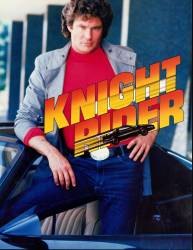Other mistake: Just after Michael finds Devon in the trailer, as he gets in K.I.T.T you see him put the gear into D and then he reverses. Then it shows you him putting the gear into R and then drives off. Looks like they got the footage the wrong way round in the edit.
Continuity mistake: When you see Bonnie and Devon in the audience waiting for Michael and K.I.T.T to perform, sitting next to Bonnie is a guy in red shirt. In another shot of the audience the same guy can be seen sitting higher up in the seating area and sat with other people. When you next see Bonnie and Devon, the guy is back sitting next to her.
Revealing mistake: When Michael and K.I.T.T turbo boost the flame thrower and disable the fire engine, Michael says to K.I.T.T "get the clown." During the shot prior to K.I.T.T pinning the clown in you see the hands steering K.I.T.T appear above the dash.






Chosen answer: Before "product placement" became common, name-brand products were rarely, if ever seen in TV shows, mostly due to avoid advertising conflicts with program sponsors. The Pepsi logo may have been taped out to prevent any commercial infringements.
raywest ★
Are you kidding? Product placement was so rampant in the 50s that sometimes you'd wonder if you were watching a TV show or a paid ad.
Brian Katcher
Knight Rider wasn't produced in the 1950s. TV shows of that era had advertising more similar to the old radio shows from the 30s and 40s. The early 50s series often had a sole sponsor, so their product (and related items) was likely seen in a program. An announcer also informed the audience at the beginning that, "This program is brought to you by (insert brand name). " From the 60s on, brand-name products weren't generally seen in TV programs. Networks sold air time to multiple advertisers, and their ads were shown during the long commercial breaks. So no, I'm not kidding.
raywest ★